Sustainable fashion is transforming how we approach style while caring for our planet. From innovative eco-materials to circular design principles, the fashion industry is embracing change that benefits both consumers and the environment.
What is sustainable fashion and why it matters
Sustainable fashion represents a movement toward clothing design, production, and consumption that prioritizes environmental responsibility and ethical practices. Unlike traditional fashion, which often relies on harmful chemicals, excessive water usage, and exploitative labor, sustainable fashion focuses on reducing waste, using eco-friendly materials, and ensuring fair working conditions.
Key Principles of Sustainable Fashion
At its core, sustainable fashion follows three main principles: reduce, reuse, and recycle. This means minimizing textile waste, repurposing old garments, and using recycled fabrics to create new clothing. Brands that embrace these principles help combat the fashion industry’s massive carbon footprint.
Why It Matters Now More Than Ever
The fashion industry is one of the largest polluters globally, contributing to 10% of global carbon emissions and consuming vast amounts of water. Fast fashion accelerates this problem by encouraging disposable clothing. Sustainable fashion offers an alternative by promoting durability, ethical sourcing, and mindful consumption.
Consumers are increasingly demanding transparency, pushing brands to adopt greener practices. By choosing sustainable fashion, individuals can reduce their environmental impact while supporting ethical labor practices.
How to Identify Truly Sustainable Brands
Look for certifications like GOTS (Global Organic Textile Standard) or Fair Trade, which verify eco-friendly materials and ethical production. Brands that prioritize slow fashion, upcycling, and carbon-neutral shipping are leading the way in sustainability.
Eco-friendly materials revolutionizing fashion design
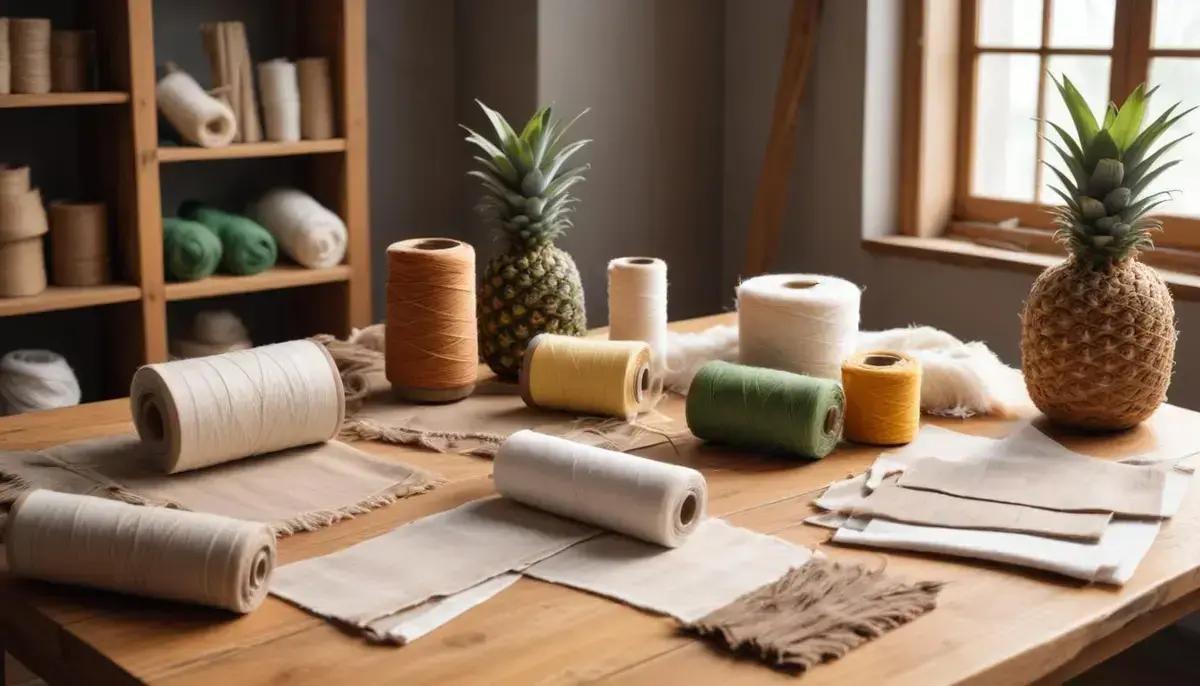
The fashion industry is undergoing a materials revolution, with innovative eco-friendly fabrics replacing traditional textiles that harm the environment. These sustainable alternatives offer comparable quality while drastically reducing water usage, chemical pollution, and carbon emissions.
Plant-Based Fibers Leading the Change
Organic cotton uses 91% less water than conventional cotton and avoids toxic pesticides. Similarly, hemp grows rapidly without chemicals and produces durable fabric. Bamboo fabric, when processed responsibly, creates soft, antibacterial textiles ideal for activewear.
Recycled and Upcycled Materials
Brands are transforming waste into wearable fashion through recycled polyester (made from plastic bottles) and regenerated nylon (from fishing nets). Upcycled materials give new life to pre-consumer waste like fabric scraps or post-consumer garments that would otherwise end in landfills.
Breakthrough Biofabrics
Cutting-edge materials include Piñatex (from pineapple leaves), mushroom leather, and algae-based dyes. These innovations not only reduce environmental impact but often outperform traditional materials in durability and functionality.
As these materials become more accessible and affordable, they’re reshaping entire supply chains. Forward-thinking designers are proving sustainability doesn’t mean sacrificing style or quality.
Circular fashion economy and clothing lifecycle
The circular fashion economy represents a radical shift from the traditional ‘take-make-waste’ model to a closed-loop system where clothing is designed, used, and regenerated sustainably. This approach keeps garments in use longer through innovative business models and conscious consumption.
Key Stages of the Circular Lifecycle
1. Design for longevity: Garments are created with durable materials and timeless styles
2. Responsible production: Using renewable energy and non-toxic dyes
3. Extended use phase: Encouraging repair, rental, and resale markets
4. End-of-life solutions: Recycling fibers or composting biodegradable materials
Innovative Business Models Driving Change
Companies are adopting clothing rental platforms, take-back programs, and upcycling initiatives to keep textiles circulating. Some brands now offer discounts for returning old garments, which are then refurbished or broken down into new fibers.
The Role of Consumers in Closing the Loop
Consumers complete the circle by choosing quality over quantity, caring for clothes properly, and utilizing repair services instead of discarding items. Simple actions like washing in cold water and air drying can significantly extend a garment’s life.
This systemic approach could reduce fashion’s environmental impact by up to 80%, proving that sustainability and profitability can coexist in the fashion industry.
Ethical manufacturing practices in modern fashion
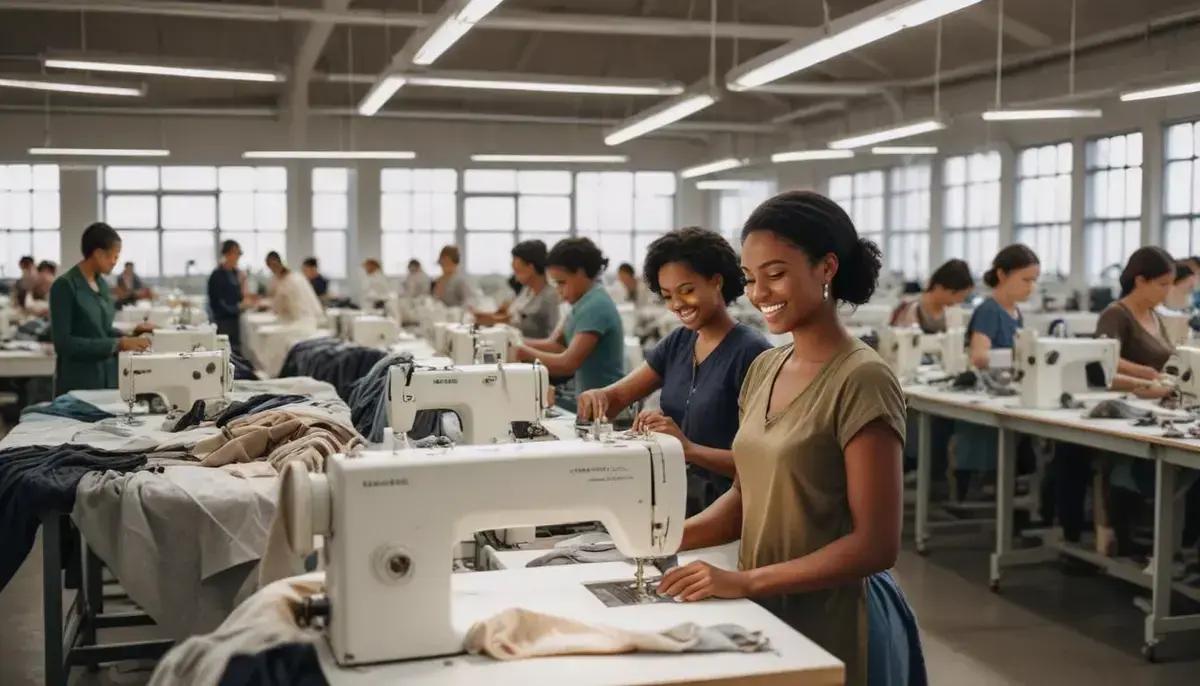
Ethical manufacturing is transforming the fashion industry by prioritizing worker welfare and environmental responsibility throughout the production process. These practices ensure clothing is made with respect for both people and planet.
Fair Labor Standards in Fashion Factories
Leading brands now enforce living wage guarantees, safe working conditions, and reasonable hours. Independent certifications like Fair Trade and SA8000 verify compliance with international labor standards, protecting workers from exploitation.
Transparent Supply Chains
Consumers increasingly demand visibility into how their clothes are made. Ethical manufacturers provide full supply chain disclosure, from raw material sourcing to final production. Blockchain technology is emerging as a tool to track garment origins with complete transparency.
Eco-Conscious Production Methods
Beyond labor practices, ethical manufacturing includes:
– Water conservation through closed-loop systems
– Renewable energy use in factories
– Non-toxic dyes and chemical management
– Zero-waste pattern cutting techniques
These comprehensive approaches prove that fashion can be both stylish and socially responsible when companies commit to ethical practices at every stage.
Fast fashion vs. slow fashion movement
The fashion industry stands at a crossroads between fast fashion’s rapid production model and the slow fashion movement’s sustainable approach. Understanding these contrasting philosophies helps consumers make informed choices about their wardrobes.
The Fast Fashion Reality
Fast fashion brands produce 52 micro-seasons annually, encouraging constant consumption of cheap, disposable clothing. This model relies on:
– Exploitative labor practices
– Synthetic, petroleum-based fabrics
– Environmentally harmful production methods
– Psychological manipulation through constant new trends
Principles of Slow Fashion
The slow fashion movement counters this with:
– Quality over quantity: Fewer, better-made pieces
– Timeless designs: Avoiding trend-driven obsolescence
– Ethical production: Fair wages and safe conditions
– Sustainable materials: Natural, organic, or recycled fibers
Environmental Impact Comparison
Fast fashion contributes to:
– 10% of global carbon emissions
– 20% of wastewater worldwide
– 85% of textiles ending in landfills annually
Slow fashion reduces these impacts through durable design and responsible consumption.
Consumers can transition by buying less, choosing better quality, and supporting transparent brands that align with slow fashion values.
Top sustainable fashion brands making a difference
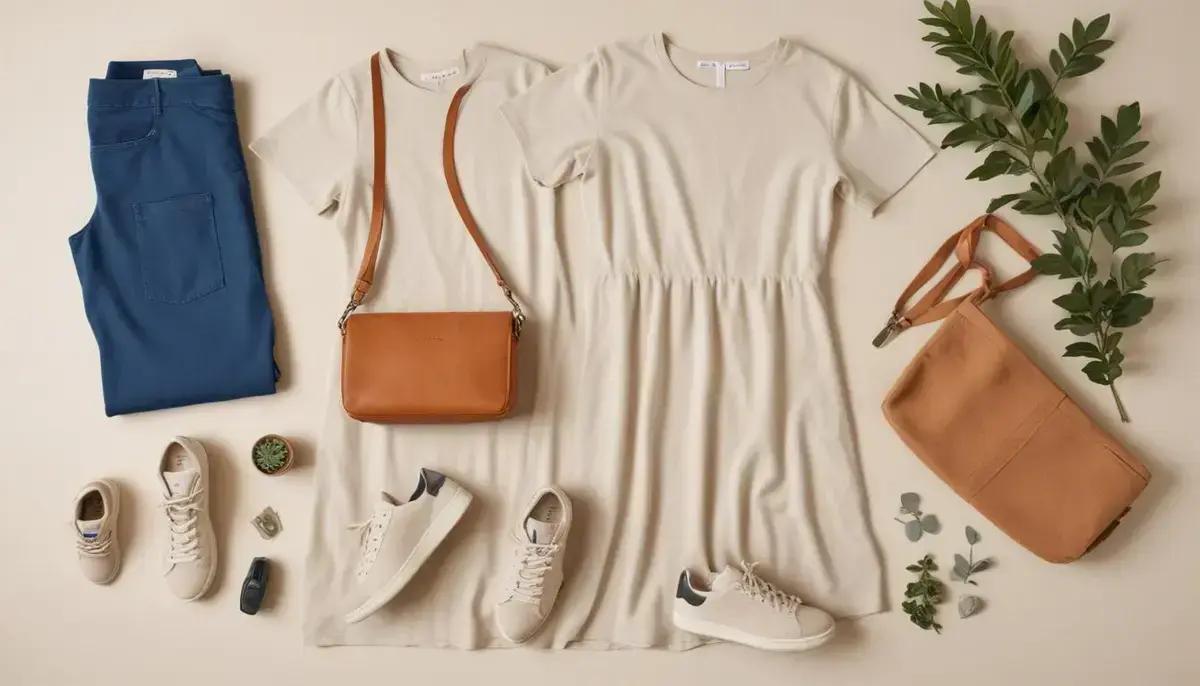
Several pioneering brands are proving that sustainable fashion can be both stylish and environmentally responsible. These leaders combine ethical practices with innovative design, setting new standards for the industry.
Luxury Sustainability Leaders
Stella McCartney continues to lead with vegan leather alternatives and a commitment to circular fashion. Eileen Fisher‘s take-back program transforms old garments into new designs, while Patagonia sets the bar for outdoor apparel with its worn wear initiative and fair trade certification.
Affordable Ethical Options
Reformation makes sustainability sexy with carbon-neutral shipping and water-saving techniques. People Tree pioneers fair trade fashion with organic cotton collections, and Pact offers budget-friendly basics made with organic materials and ethical manufacturing.
Innovative Material Pioneers
Veja creates sneakers from wild rubber and recycled plastic bottles. Allbirds revolutionized footwear with merino wool and sugarcane-based foam. Pangaia uses cutting-edge materials like seaweed fiber and biodegradable dyes in its colorful collections.
These brands demonstrate that sustainability isn’t a trend but the future of fashion, offering consumers stylish alternatives that align with their values.
How to build a sustainable wardrobe on any budget
Building a sustainable wardrobe doesn’t require a complete closet overhaul or a big budget. With strategic choices and mindful shopping habits, anyone can cultivate an eco-friendly style that lasts.
Start With What You Have
Before buying new, audit your current wardrobe. Repair damaged items, alter ill-fitting pieces, and rediscover forgotten favorites. Organize a clothing swap with friends to refresh your options without spending money.
Smart Shopping Strategies
When purchasing new:
– Prioritize quality over quantity (fewer, better-made pieces)
– Look for versatile basics that mix and match easily
– Choose natural fibers like organic cotton, linen, or Tencel
– Support local thrift stores and online resale platforms
Budget-Friendly Sustainable Brands
Many affordable options exist:
– Secondhand first: ThredUp, Poshmark, local consignment
– Ethical basics: Pact, Kotn, Organic Basics
– Sustainable fast fashion alternatives: MUD Jeans, Armedangels
Capsule Wardrobe Approach
Create a seasonal capsule of 30-40 versatile items that all work together. This reduces decision fatigue, minimizes waste, and helps you appreciate what you own.
Remember: the most sustainable garment is the one already in your closet. Care for clothes properly to extend their lifespan significantly.
Zero-waste fashion design principles and techniques

Zero-waste fashion design challenges traditional garment production by eliminating textile waste at the design stage. This innovative approach rethinks how patterns are created and materials are used.
Key Design Principles
1. Pattern engineering: Creating interlocking patterns that use 100% of the fabric
2. Minimal cutting: Designing garments with fewer seams and panels
3. Multi-functional pieces: Items that can be worn multiple ways
4. Rectangular construction: Utilizing the fabric’s natural shape
Innovative Techniques
Designers employ:
– Jigsaw puzzle cutting where all pieces fit together perfectly
– Draping methods that adapt to fabric dimensions
– Modular designs allowing easy repairs and alterations
– Upcycling scraps into trims, accessories or new garments
Industry Implementation
Leading brands combine these techniques with:
– Digital pattern-making software to optimize layouts
– 3D prototyping to visualize zero-waste designs
– On-demand production to prevent overstock waste
These methods prove that beautiful fashion can be created without environmental sacrifice, inspiring a new generation of sustainable designers.
Fashion rental and sharing economy models
The fashion industry is embracing rental and sharing economy models as sustainable alternatives to ownership, revolutionizing how consumers access style while reducing environmental impact.
How Fashion Rental Works
Modern rental platforms offer:
– Subscription services for regular wardrobe refreshes
– Special occasion rentals for one-time events
– Luxury access to high-end designer pieces
– Corporate wardrobe solutions for businesses
Benefits of Clothing Sharing
These models provide:
– Cost savings compared to purchasing
– Reduced environmental footprint through shared use
– Access to variety without closet clutter
– Circular economy participation extending garment life
Leading Rental Platforms
Popular services include:
– Rent the Runway for designer apparel
– Nuuly for trendy everyday wear
– By Rotation for peer-to-peer sharing
– Hurr Collective for luxury rentals
Future of Shared Fashion
The market is expanding with:
– Local rental hubs in physical stores
– Integrated cleaning services for hygiene
– Blockchain tracking for garment histories
– AI-powered styling for personalized selections
This shift represents a fundamental change in consumer behavior, prioritizing access over ownership in fashion.
Technology innovations in sustainable textiles

Cutting-edge technological innovations are revolutionizing sustainable textiles, offering eco-friendly alternatives that don’t compromise on quality or performance. These advancements are transforming fabric production from the ground up.
Bioengineered Textiles
Scientists are developing:
– Lab-grown leather from mushroom mycelium
– Spider silk proteins fermented from yeast
– Algae-based fabrics that absorb CO2 during growth
– Bacterial cellulose that self-assembles into material
Smart Sustainable Fabrics
Innovative textiles now feature:
– Self-cleaning properties using nanotechnology
– Temperature regulation through phase-change materials
– Biodegradable electronics woven into fabric
– Color-changing capabilities without harmful dyes
Recycling Breakthroughs
New processes enable:
– Chemical recycling of blended fabrics back to raw materials
– Enzyme-based decomposition of polyester
– Automated sorting systems using AI and hyperspectral imaging
– Fiber-to-fiber regeneration with minimal quality loss
These technologies promise a future where fashion is both high-tech and environmentally responsible, merging sustainability with cutting-edge functionality.
Consumer behavior changes driving eco-fashion
A significant shift in consumer behavior is accelerating the growth of eco-fashion, as shoppers increasingly prioritize sustainability in their purchasing decisions. This transformation is reshaping the entire fashion industry.
Key Consumer Trends
Modern shoppers are:
– Researching brands’ sustainability claims before purchasing
– Choosing quality over quantity to reduce waste
– Supporting circular models like resale and rental
– Demanding transparency about supply chains
Generational Differences
– Gen Z leads with 73% willing to pay more for sustainable options
– Millennials prioritize ethical production practices
– Older generations focus on durability and longevity
Changing Shopping Habits
Consumers are adopting:
– Mindful purchasing with planned wardrobes
– Secondhand shopping as a first option
– Clothing care practices to extend garment life
– Brand boycotts for poor sustainability performance
Impact on Industry
These behavior changes force brands to:
– Reform production methods
– Improve sustainability reporting
– Develop take-back programs
– Invest in eco-friendly materials
This consumer-led revolution proves sustainability is no longer niche but a market imperative driving real change in fashion.
Sustainable fashion’s impact on global climate goals
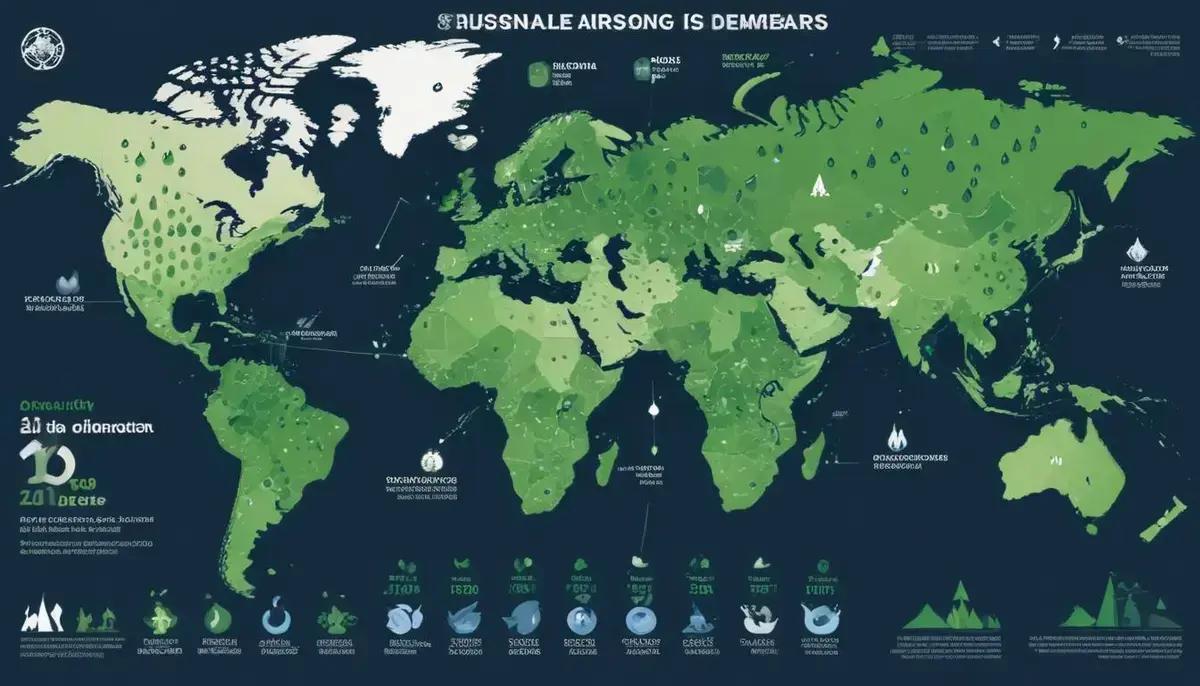
The sustainable fashion movement is playing an increasingly vital role in helping achieve global climate targets, addressing one of the world’s most polluting industries with innovative solutions.
Carbon Emission Reductions
Sustainable practices are cutting fashion’s carbon footprint through:
– Renewable energy in production facilities
– Localized manufacturing reducing transportation emissions
– Regenerative agriculture for natural fibers
– Circular business models extending product lifecycles
Water Conservation Achievements
Eco-fashion is dramatically reducing water usage by:
– Organic cotton farming (uses 91% less water)
– Waterless dyeing technologies
– Closed-loop water systems in factories
– Natural indigo alternatives to toxic dyes
Waste Diversion Progress
The industry is tackling waste with:
– Upcycling initiatives repurposing 95% of pre-consumer waste
– Compostable textiles reducing landfill dependence
– Digital sampling cutting physical prototype waste
– Take-back programs keeping garments in use
Alignment with SDGs
Sustainable fashion directly supports:
– SDG 12 (Responsible Consumption)
– SDG 13 (Climate Action)
– SDG 14 (Life Below Water)
– SDG 15 (Life on Land)
While challenges remain, the sector’s transformation demonstrates how industry-wide change can contribute significantly to global sustainability targets.
Care and maintenance tips for sustainable clothing
Proper care and maintenance significantly extends the lifespan of sustainable clothing, maximizing your investment while minimizing environmental impact. These practical techniques preserve both fabric quality and garment integrity.
Washing Best Practices
– Cold water washing (saves energy and prevents shrinkage)
– Eco-friendly detergents (biodegradable and phosphate-free)
– Full load washing (reduces water consumption)
– Gentle cycles (protects delicate natural fibers)
– Mesh laundry bags (for vulnerable items)
Drying and Ironing
– Air drying whenever possible (preserves elasticity)
– Lay flat drying for knits and woolens (prevents stretching)
– Low-heat ironing with steam (reduces wrinkles without damage)
– Natural deodorizing with sunlight (between wears)
Storage Solutions
– Breathable garment bags for natural fibers
– Cedar blocks instead of mothballs
– Proper folding techniques to avoid creases
– Seasonal rotation with proper cleaning first
Repair and Refresh
– Basic mending skills for small repairs
– Professional alterations for better fit over time
– Fabric shavers to remove pills
– Natural stain treatments (baking soda, vinegar)
These mindful care habits can double or triple a garment’s lifespan, making them essential for any sustainable wardrobe.
Future predictions for the eco-fashion industry
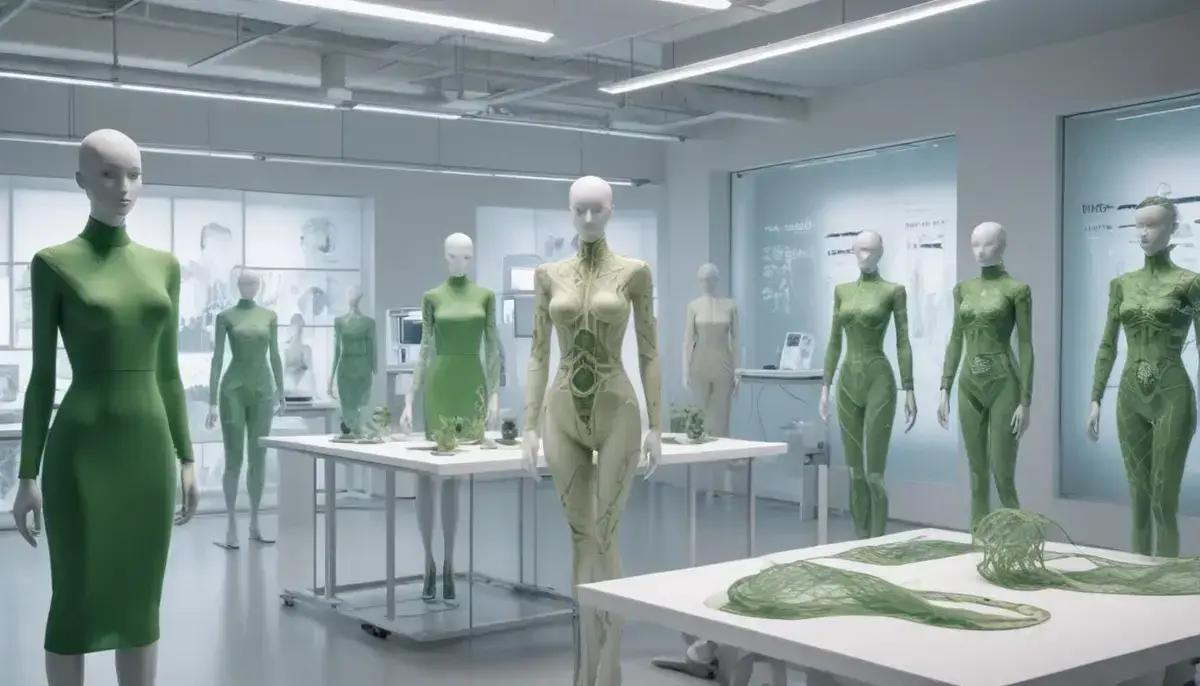
The eco-fashion industry is poised for transformative growth, with emerging technologies and shifting consumer values driving innovation. These developments promise to reshape how we produce, consume, and think about clothing in the coming decade.
Material Innovations on the Horizon
– Biofabrication of lab-grown leather and silk
– Carbon-negative textiles made from algae and air pollution
– Self-repairing fabrics with embedded microorganisms
– Smart textiles that monitor environmental impact
Radical Transparency Evolution
– Blockchain integration for complete supply chain visibility
– AI-powered sustainability scoring for all garments
– Digital product passports with lifecycle information
– Augmented reality showing production processes
Business Model Disruptions
– Mainstream clothing-as-a-service subscriptions
– Hyper-local microfactories reducing transportation
– AI-driven personalized production minimizing waste
– Closed-loop systems becoming industry standard
Policy and Regulation Changes
– Extended producer responsibility laws worldwide
– Carbon pricing affecting fast fashion economics
– Greenwashing penalties enforcing transparency
– Sustainable fashion education in design schools
These advancements suggest a future where sustainable practices become the norm rather than the exception in fashion.
The Future of Fashion is Sustainable
Throughout this exploration of sustainable fashion, we’ve seen how eco-conscious practices are transforming every aspect of the industry – from innovative materials to circular business models.
The shift toward sustainability isn’t just a trend; it’s becoming essential as consumers demand accountability and the industry addresses its environmental impact. While challenges remain, the progress in ethical manufacturing, waste reduction, and technological innovation proves meaningful change is possible.
Each small step – whether choosing quality over quantity, supporting ethical brands, or properly caring for clothes – contributes to a larger movement. The future of fashion lies in balancing style with responsibility, proving that what’s good for the planet can also be good for business and personal expression.
As we move forward, sustainable fashion will continue evolving from alternative option to industry standard, reshaping how we think about clothing at every level.







